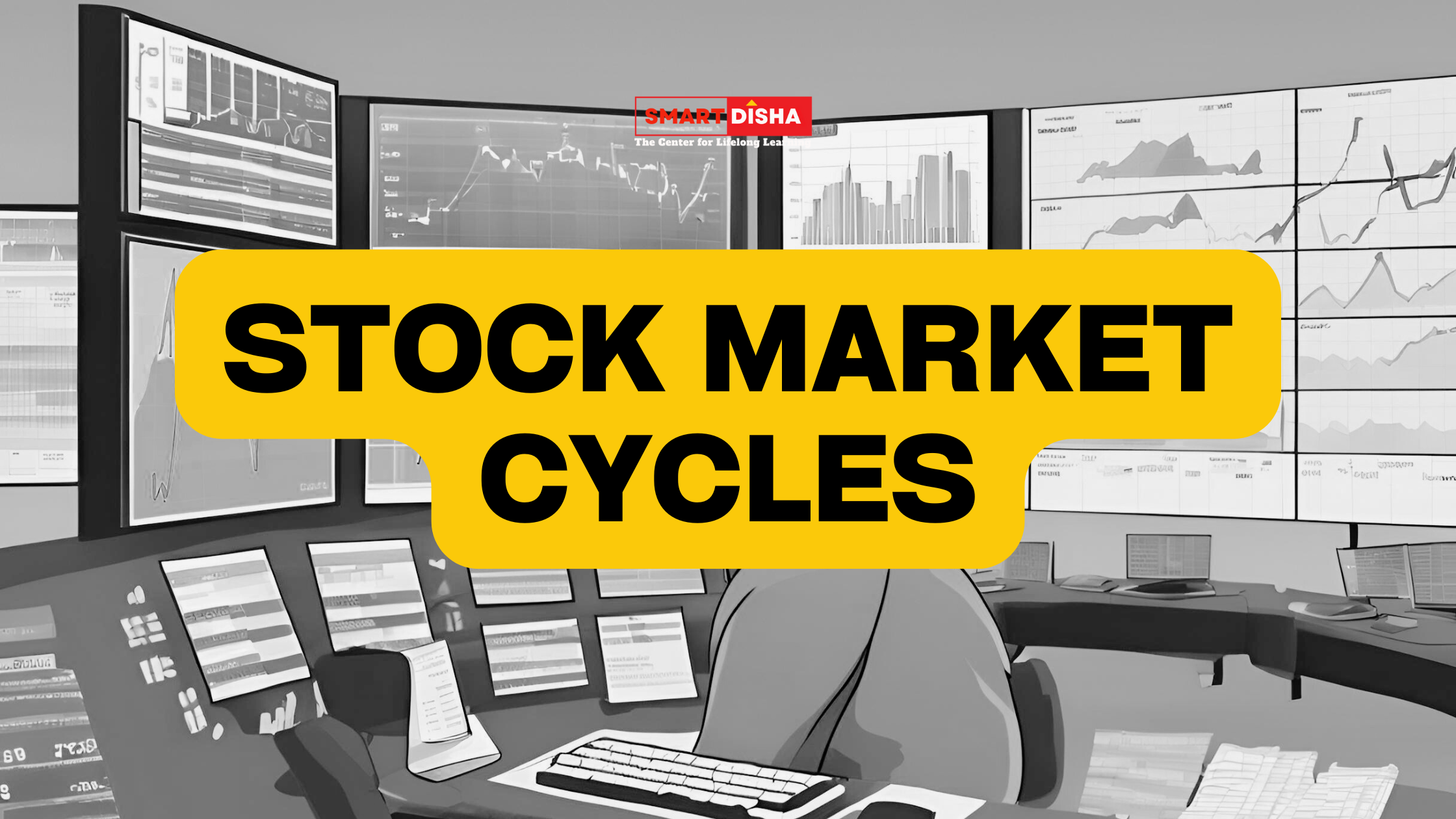The stock market, like the economy, moves in cycles. These cycles reflect the overall performance of the market and can significantly impact the value of your investments. Understanding stock market cycles can help you make informed decisions, reduce risk, and time your investments more effectively. This guide will explain what stock market cycles are, how they work, and how they influence investment strategies.
What Are Stock Market Cycles?
Stock market cycles refer to the recurring patterns of growth and decline in the stock market. They are driven by various economic factors, including interest rates, inflation, corporate earnings, and investor sentiment. Stock market cycles are usually broken down into four phases:
- Accumulation: This phase occurs after the market has bottomed out. At this point, smart investors start buying stocks because they believe prices are undervalued.
- Markup: During this phase, the market begins to recover, and prices rise. Investor confidence improves, leading to increased buying activity.
- Distribution: In this phase, stock prices reach their peak, and investors begin to sell. The market shows signs of slowing down, and there’s a mix of optimism and caution.
- Decline: This is the phase where stock prices fall, and market sentiment turns negative. Investors begin selling off, anticipating further declines.
Each cycle can last months or years, depending on various factors. Recognizing these phases is essential for making informed investment decisions.
Phases of a Stock Market Cycle
1. Accumulation Phase
The accumulation phase begins after the market has experienced a significant decline or recession. During this phase:
- Market sentiment is still negative, but savvy investors start buying stocks because they are undervalued.
- Prices are relatively low, and there’s little investor interest.
- This is the ideal time for long-term investors to start accumulating shares at discounted prices.
Historically, this phase is a good time to invest for those who can tolerate some risk, as markets are often poised for recovery.
2. Markup Phase
The markup phase is when the stock market begins to recover, and stock prices rise:
- Investors gain confidence in the market’s recovery, leading to increased demand for stocks.
- Positive economic data and corporate earnings support the upward trend.
- During this phase, many investors who missed the bottom enter the market, driving prices higher.
Investing during this phase can be rewarding, as there’s still potential for growth, but it’s important to monitor market conditions carefully.
3. Distribution Phase
The distribution phase marks the market’s peak:
- Investor sentiment becomes mixed—some remain optimistic, while others start selling to lock in profits.
- Stock prices may fluctuate as selling pressure builds up.
- The market shows signs of exhaustion, but there’s no clear downturn yet.
This is often a time for caution. Investors may consider adjusting their portfolios by reducing exposure to overvalued stocks.
4. Decline Phase
The decline phase is characterized by falling stock prices and negative sentiment:
- Investors start selling off stocks, expecting further declines.
- Economic indicators, such as rising interest rates or declining corporate earnings, may signal the beginning of a bear market.
- Panic selling can exacerbate the downturn, leading to sharp declines.
During this phase, conservative investors may look to minimize losses by moving into safer assets such as bonds or defensive stocks.
Factors Influencing Stock Market Cycles
Several factors contribute to the movements within stock market cycles, including:
- Economic Conditions: The state of the economy plays a significant role in determining where the market stands in its cycle. GDP growth, unemployment rates, and consumer spending all affect stock prices.
- Interest Rates: When central banks raise or lower interest rates, it impacts borrowing costs for businesses and consumers. Lower rates tend to boost stock markets, while higher rates can slow growth.
- Corporate Earnings: Stock prices reflect the performance of companies. Rising corporate profits generally lead to higher stock prices, while declining profits can cause market downturns.
- Investor Sentiment: Emotions often drive short-term market movements. Fear and greed can lead to rapid buying or selling, creating volatility in stock prices.
Understanding how these factors influence the market can help you anticipate shifts in the cycle and adjust your investment strategy accordingly.
How Stock Market Cycles Impact Investment Strategies
Recognizing where the market is in its cycle is critical to determining the best investment approach. Each phase presents unique opportunities and risks:
- During the Accumulation Phase: Value investors often buy stocks at discounted prices, taking advantage of pessimism in the market. This is an excellent time for long-term investors to enter the market, provided they have the patience to wait for recovery.
- During the Markup Phase: Growth investors typically benefit from this phase as stock prices rise. Many investors become more aggressive, increasing their positions in equities, but it’s important to remain aware of overvaluation risks.
- During the Distribution Phase: Investors may look to lock in gains or reduce exposure to high-risk stocks. This phase often requires a more cautious approach, focusing on diversification to avoid losses.
- During the Decline Phase: Defensive investments like bonds or dividend-paying stocks often become more attractive. Some investors may also consider holding cash to protect against further losses and to be ready for opportunities when the market bottoms out again.
Market Timing and Long-Term Investing
While understanding stock market cycles is essential, it’s important to note that timing the market perfectly is nearly impossible. Even seasoned investors struggle to predict exact market tops and bottoms. Instead of trying to time the market, many experts recommend:
- Diversification: By investing in a mix of asset classes and sectors, you can spread risk and reduce the impact of a market downturn.
- Dollar-Cost Averaging: This strategy involves investing a fixed amount of money at regular intervals, regardless of market conditions. Over time, this helps smooth out the effects of market volatility.
- Long-Term Focus: Staying invested over the long term allows you to ride out market cycles and benefit from the market’s overall upward trend.
Conclusion:
Stock market cycles are a natural part of investing, and understanding them can help you make more informed decisions. By recognizing the different phases and knowing how economic factors influence the market, you can better manage risk and seize opportunities.
However, it’s essential to maintain a long-term perspective and not get too caught up in short-term market movements. With a balanced investment strategy, patience, and discipline, you can navigate stock market cycles effectively and achieve your financial goals.




